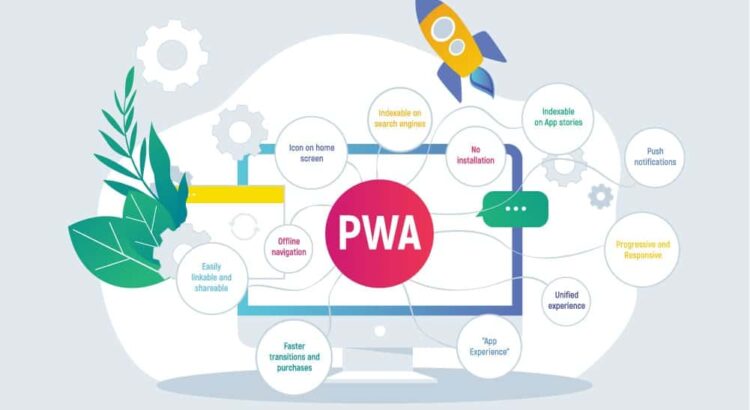In the ever-evolving landscape of web development, Progressive Web Apps (PWAs) have emerged as a revolutionary approach, blending the best of both web and mobile applications. Offering enhanced user experiences and bridging the gap between native apps and traditional websites, PWAs have gained momentum for their unique features. Let’s explore the characteristics, advantages, and challenges associated with these cutting-edge applications.
Features of Progressive Web Apps (PWAs):
- Offline Functionality: One of the standout features of PWAs is their ability to function seamlessly even in offline mode. Through service workers, PWAs can cache essential resources, ensuring users can access content and features without an active internet connection.
- Responsive Design: PWAs are designed to be responsive and adaptable to various screen sizes and devices. This ensures a consistent and user-friendly experience, whether accessed on a desktop, tablet, or smartphone.
- App-Like User Experience: PWAs offer a native app-like experience, providing smooth animations, navigation, and interactions. This immersive experience contributes to increased user engagement and satisfaction.
- Push Notifications: PWAs allow developers to implement push notifications, enabling timely updates and re-engaging users with relevant content or information. This feature enhances user retention and keeps them informed even when the PWA is not actively open.
- Fast Loading Speed: PWAs are optimized for speed, delivering swift loading times and improved performance. This is achieved through techniques like lazy loading and efficient resource caching, ensuring a seamless and enjoyable user experience.
Pros of Progressive Web Apps (PWAs):
- Cross-Platform Compatibility: PWAs eliminate the need for separate development for different platforms. A single codebase can be deployed across various devices and operating systems, reducing development time and costs.
- Improved User Engagement: The app-like interface and offline functionality contribute to increased user engagement. Users are more likely to spend time on PWAs, leading to higher conversion rates for businesses.
- Easier Maintenance: With a single codebase, maintaining and updating PWAs is more straightforward. Changes can be implemented seamlessly, ensuring a consistent experience for all users.
- Discoverability: Unlike native apps that require installation from an app store, PWAs are discoverable through search engines. This enhances their visibility, making it easier for users to find and access the application.
Cons of Progressive Web Apps (PWAs):
- Limited Device Access: While PWAs offer cross-platform compatibility, some device-specific features may not be accessible. Native apps might still be required for applications heavily reliant on specialized hardware or OS capabilities.
- Browser Dependency: The success of PWAs is somewhat dependent on the browser’s support for certain features. While major browsers widely support PWAs, there may be variations in functionality across different browsers.
- Limited Native Functionality: PWAs might not fully replace native apps for certain functionalities, such as advanced camera access or hardware-specific features. This limitation might impact the suitability of PWAs for certain use cases.
In conclusion, Progressive Web Apps represent a significant leap in web development, offering a harmonious blend of web and app features. Despite some limitations, the advantages of PWAs in terms of user experience, cross-platform compatibility, and maintenance efficiency make them a compelling choice for businesses and developers looking to provide cutting-edge digital experiences. As technology continues to evolve, PWAs are likely to play an increasingly pivotal role in the future of web development.
